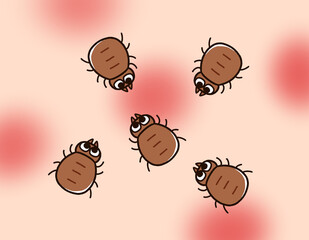
Lyme disease continues to be a pressing concern for those living in the Northeast, especially as spring arrives early, bringing with it the resurgence of insects and other small creatures. Among these, deer ticks, with their diminutive size and black legs, are commonly found in wooded areas and grassy landscapes.
Whether you're enjoying outdoor activities, lounging in your backyard, or setting out on a hike, minimizing contact with deer ticks is crucial. AFC Urgent Care North Worcester has compiled an extensive guide for our neighbors and community members in the Rocky Hill area to help them avoid deer ticks and understand what steps to take if bitten by one.
Deer Tick Season Begins!
Deer ticks, recognizable by their small, black legs, thrive in wooded areas and grassy fields. They are most active during the warmer months, typically from April through September. These ticks are carriers of Lyme disease, a bacterial infection that can lead to severe health complications if left untreated.
Preventing Encounters with Deer Ticks
If you're planning outdoor activities in areas known to be deer tick habitats, here are some precautions you can take to protect yourself:
- Cover exposed skin with long-sleeved shirts and pants.
- Tuck pants into socks or boots to prevent ticks from climbing up your legs.
- Use tick repellents containing DEET or Permethrin.
- Stick to marked trails to avoid venturing into tall grass or other tick-prone areas.
- Conduct thorough tick checks upon returning indoors.
Recognizing Symptoms of Lyme Disease
In the event of a deer tick bite, be vigilant for signs of Lyme disease. Symptoms can vary, but common ones include:
- A spreading red rash, often resembling a "bull's eye" around the bite site.
- Fatigue, fever, and headaches.
- Joint stiffness and pain.
- Muscle weakness and aches.
Prompt medical attention is crucial if you experience any of these symptoms. While Lyme disease is treatable with antibiotics, early detection significantly improves the chances of a full recovery.
Safely Removing a Deer Tick
Should you find a deer tick attached to your skin, it's essential to remove it carefully to prevent Lyme disease transmission. Follow these steps:
- Use fine-tipped tweezers to grasp the tick as close to your skin as possible.
- Pull the tick straight out with steady, even pressure.
- Avoid twisting or jerking the tick, as this may cause its mouthparts to break off in your skin.
- Clean the bite area with soap and water, and apply an antiseptic.
If you're uncomfortable removing the tick yourself or suspect Lyme disease contraction, seek medical assistance promptly.
AFC Urgent Care North Worcester: Your Ally in Deer Tick Management
Deer ticks and Lyme disease present significant risks to Northeastern residents. By adopting preventive measures and addressing tick bites promptly, you can protect yourself against this potentially life-threatening illness. Enjoy the outdoors safely this spring and summer!
AFC Urgent Care North Worcester operates seven days a week and is equipped to assist with tick removal. While appointments aren't required, they're readily available. Most insurances are accepted.